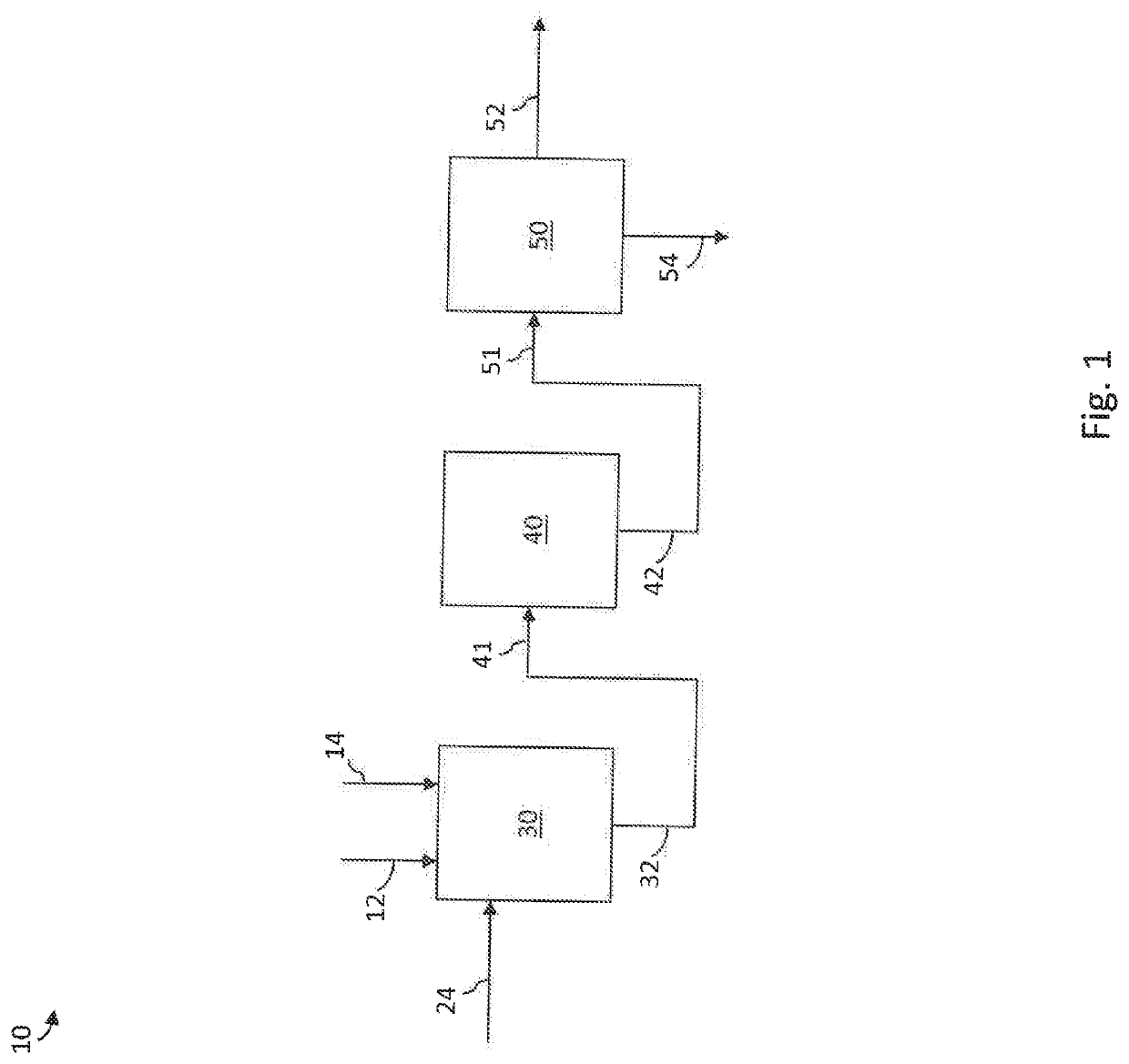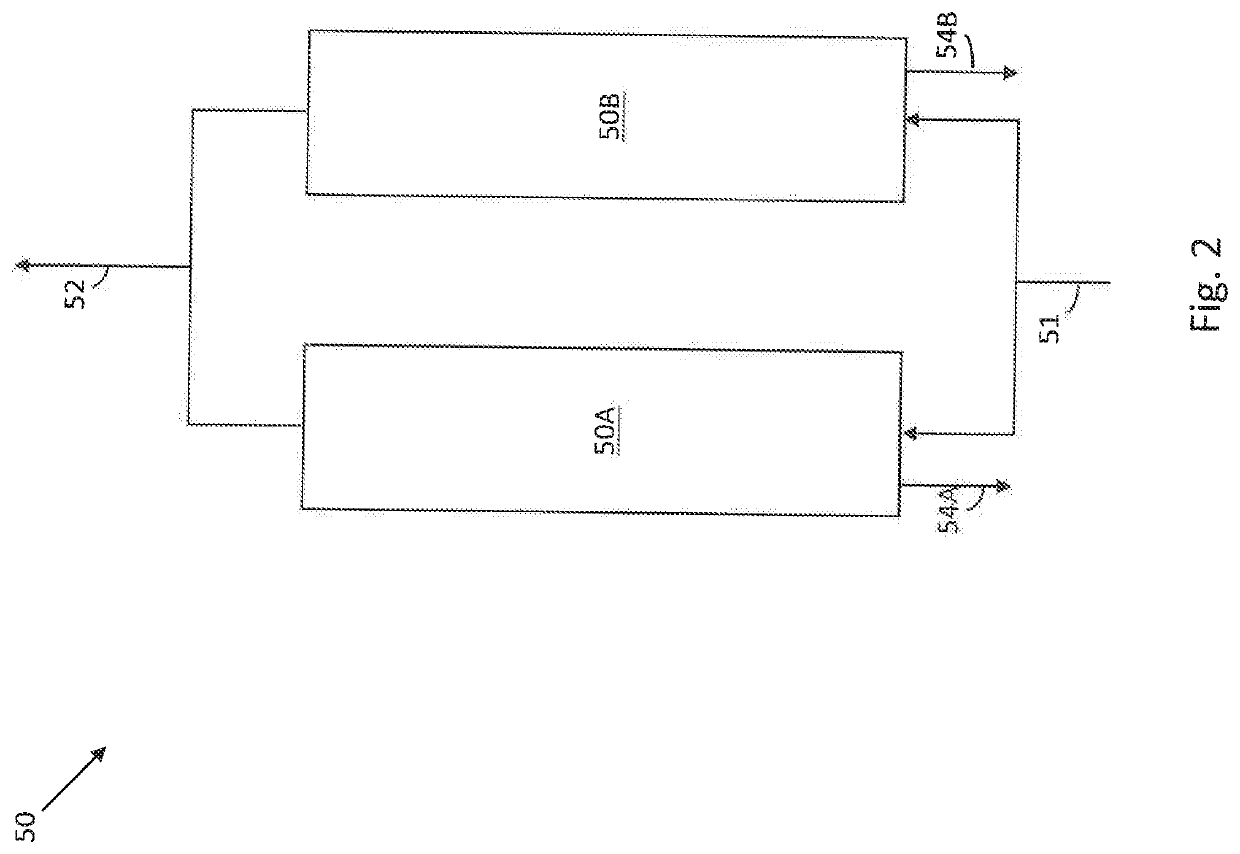Disposal of disulfide oil compounds and derivatives in delayed coking process
a technology of disulfide oil and derivatives, which is applied in the direction of organic compounds/hydrides/coordination complex catalysts, physical/chemical process catalysts, thermal non-catalytic cracking, etc., can solve the problems of reducing the stability of end-product fuels, mercaptans in petroleum products are undesirable, and the use of expensive and sensitive catalysts, etc., to accelerate the formation of coke, reduce the residence time, and increase the effect of coke production
- Summary
- Abstract
- Description
- Claims
- Application Information
AI Technical Summary
Benefits of technology
Problems solved by technology
Method used
Image
Examples
example 1
[0054]A vacuum residue (VR) oil sample “VR-1” derived from an Arab medium crude oil was blended with DSO compounds and subjected to delayed coking. The vacuum residue and DSO were blended at the various weight percentages indicated in Columns 1 and 2 of Table 1.
TABLE 13451MCR ofMCRMCR6Vacuum2BlendExpectedVRCokeResidueDSOMeasuredcalculationBasisYieldW %W %W %W %W %W %100023.423.423.437.495522.322.223.537.691921.821.324.038.3673316.415.724.539.2505012.611.725.240.3
[0055]Each blend was analyzed for its micro carbon residue (MCR) content using the procedure of ASTM D4530, with the results shown in Column 3 of Table 1. Assuming that only the vacuum residue contributes to the overall MCR content, the expected MCR content for each blend is listed in Column 4 of Table 1. It is understood that the sulfur introduced with the DSO is distributed among the solid, liquid and gaseous products formed during the coking step. In accordance with standing refinery practices, the coking unit products wi...
example 2
[0060]Another vacuum residue (VR) oil sample derived from an Arab medium crude oil was mixed with ODSO compounds to form a blended heavy oil mixture and subjected to delayed coking. The weight percent of vacuum residue to ODSO was varied over the range from 100% VR to 24.5 W %, with the corresponding maximum of 75.5 W % ODSO, as entered in Columns 1 and 2 of Table 2.
TABLE 23451MCR ofMCRMCR6Vacuum2BlendExpectedVRCokeResidueODSOMeasuredCalculatedBasisYieldW %W %W %W %W %W %100.00.021.721.721.734.790.69.420.719.722.836.675.524.521.316.428.245.150.050.015.510.931.049.627.572.59.96.036.157.624.575.511.95.348.677.7
[0061]Each blended heavy oil mixture was analyzed for its MCR content using the ASTM D4530 method, with the results shown in Column 3 of Table 2. Assuming that only the vacuum residue contributes to the overall MCR content, the expected MCR content for each blend is listed in Column 4 of Table 2. The normalized MCR content is entered in Column 5 of Table 2. The MCR content of ea...
PUM
| Property | Measurement | Unit |
|---|---|---|
| Temperature | aaaaa | aaaaa |
| Temperature | aaaaa | aaaaa |
| Boiling point | aaaaa | aaaaa |
Abstract
Description
Claims
Application Information
 Login to view more
Login to view more - R&D Engineer
- R&D Manager
- IP Professional
- Industry Leading Data Capabilities
- Powerful AI technology
- Patent DNA Extraction
Browse by: Latest US Patents, China's latest patents, Technical Efficacy Thesaurus, Application Domain, Technology Topic.
© 2024 PatSnap. All rights reserved.Legal|Privacy policy|Modern Slavery Act Transparency Statement|Sitemap


